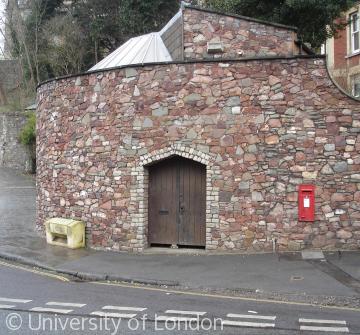Jacob's Well - remains of Jewish Ritual Washing House

In Jacob's Well Road a small rock-cut chamber with two stone steps contains a wellhead. The lintel above has part of an inscription, of which only one Hebrew character (chet) can be read with confidence. Given its proximity to the medieval cemetery, this is almost certainly a Jewish medieval monument. It has been suggested that the well was used as a mikveh, or ritual bath used principally for female purification, but its distance from the Jewry, some 1,600m, and the terrain on Brandon Hill, rule out its use by the women, as they would have been highly vulnerable to unwelcome attention, or even attack, on their regular monthly visits. More probably it was a bet tohorah, a ritual bath associated with burial rites. Jacob’s Well, it seems, offered provisions for ritual purification, whether of the corpse itself or of those who were deemed impure through contact with it.
In accordance with their religion and customs the Jews needed a secluded hillside for a separate cemetery together with two sources of water, one for the washing of their dead and the other for their purification rituals. The spring and chamber for preparing the dead for burial needed to be close to the cemetery and was known as the ‘Tahara’. A Mikveh could utilise either still or flowing water, however the rules for construction and use were different, and thus the distinction had to be clearly marked. After completing the work on the spring the final addition would have been a notice 'Sacholim', advising their brethren that it was a Mikveh with flowing water and to use it in accordance with the appropriate rules. Fortunately for posterity the important word was deeply carved into the massive lintel stone above the Mikveh chamber, where it remains today.
Content generated during research for the paperback book 'Bristol: Ethnic Monorities and the City 1000-2001' (ISBN 13 : 978-1-86077-477-5 ) for the England's Past for Everyone series

